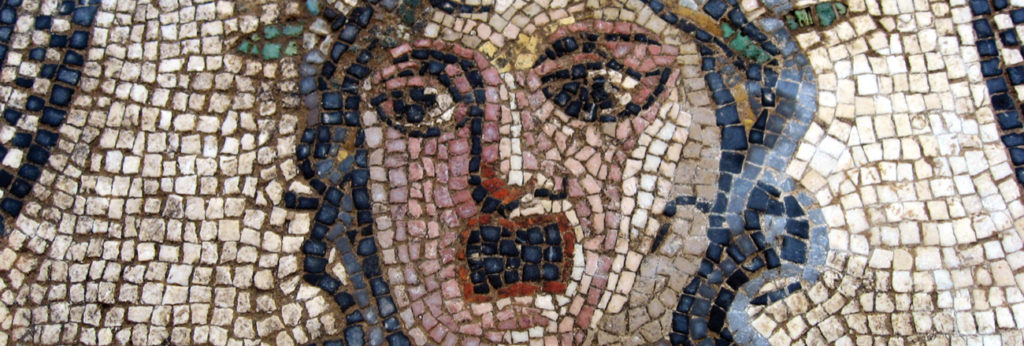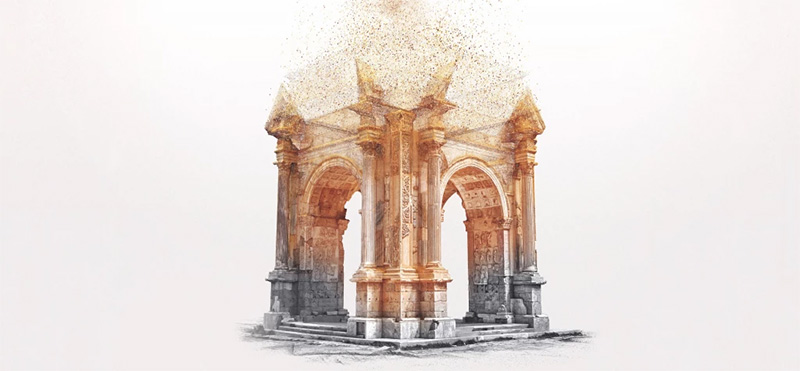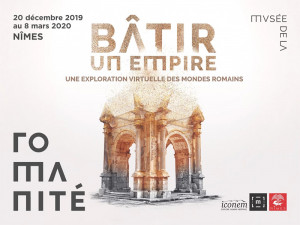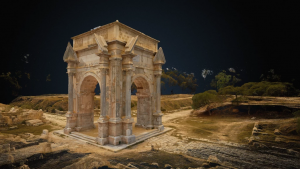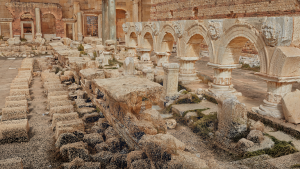Bâtir un Empire. Une exploration virtuelle des mondes romains (2019)
An immersive voyage to the heart of archaeological sites, to discover the urban and architectural models of the Roman cities, that are so different and yet so similar…
Thanks to the tremendous capabilities of new digital techniques, the exhibition “Building an Empire” invites visitors on a historic, immersive and sensory voyage, with spectacular demonstrations of the greatest archaeological sites throughout the Mediterranean. Using a combination of little-known monuments and symbols of world heritage, this exploration takes visitors on a discovery of the urban and architectural models of the Roman cities, that are so different and yet so similar.
In the 2nd century, the Roman Empire attained its greatest expansion. From Scotland to the Sahara, from the Atlantic to the Euphrates, around Rome, more than forty provinces turned the Mediterranean Sea into a Roman lake.
But apart from the legal status of a Roman citizen, what was Roman identity really based on? What made an inhabitant of these provinces really feel like a Roman citizen? The western part of the Empire that was quickly taken over by Roman civilisation, particularly Gaul and Spain, has often been contrasted with the eastern part of the Empire, that was for a long time marked by Greek-inspired models. Is there a common Roman model that applies to all the provinces of the Empire? Is there a set of distinctive criteria that categorises Roman culture in each region?
This 3D exploration of 7 key Roman sites begins in Nîmes: Baelo Claudia (Spain), Carthage (Tunisia), Pompeii (Italy), Lepcis Magna (Libya), Aphrodisias (Turkey), Palmyra (Syria) and Garni (Armenia). This exhibition takes visitors from one side of the Mediterrean to the other, across the main architectural and urban characteristics of the Roman civilisation, and is an opportunity to understand the differences and similarities of these Roman worlds, thanks to an immersive experience into these various cities
The Musée de la Romanité and Iconem would like to thank their scientific partners, who provided their support for the work involved in digitalising and researching these sites:
- Aphrodisias: Geyr Foundation
- Baelo Claudia: Research Institute into Antique Architecture (IRAA) – Casa de Velazquez – Archaeology & Heritage in the Mediterranean (ARPAMED)
- Carthage: Club Didon Carthage
- Delos: French School at Athens – Greek Ministry of Culture
- Garni: Pascal Convert – Armenian Ministry of Culture
- Lepcis Magna: Iconem Fund – Department of Antiquities of Libya (DOA) – French Archaeological Mission to Libya (MAFL)
- Palmyra: Directorate General of Antiquities & Museums of Syria (DGAM)
- Pompeii: French Institute for Research in Computer Science and Automation (INRIA) – Joint Research Centre INRIA-Microsoft Research – Parco Archeologico di Pompei – Ecole Normale Supérieure (ENS)
The ‘Building an Empire’ exhibition created this immersive experience using innovative techniques in digitalising our heritage. The Musée de la Romanité called upon Iconem, a French company specialised in this field. Using drones, still photography and algorithms, Iconem created 3D models of several major Roman sites, so you can discover a part of these fantastic urban masterpieces in the exhibition.
The 3D digital images created by Iconem for these heritage sites – who also created the exhibitions ‘Sites Eternels’ at the Grand Palais (2016) and ‘Cités Millénaires’ at the Arab World Institute (2018), – are a precious scientific tool, as well as a tool for cultural mediation and to showcase these sites. Thanks to this tool, a 100% digital and immersive exhibition was created, with huge images that plunge the visitor into a virtual tour.
The tour includes maps, labels, spectacular immersive images that take visitors on a general or more detailed exploration, the latest news about historic discoveries, and ancient author testimonies indicating which special features of Roman markers we should look out for. The images of each site (3D models) will focus on the architectural elements, whether they are shared or unique.
This educational and moving voyage is a logical way to continue your tour of the city of Nîmes and its ancient monuments, here put into context as part of an Empire, in a sensory experience that is somewhere between the virtual and real worlds.
